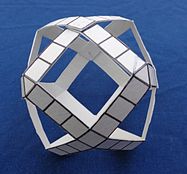Let us take stock. The arguments of the book can be seen as an upward path to modal empiricism: we start from an account of scientific practice so as to end with claims about what can be known about reality. After reviewing various accounts of theories and representation in chapter 2, I argue in chapter 3 that scientific models and theories convey norms for concrete applications. The question then bears on the aim of these norms. In chapter 4, I argue that this aim has to do with ideal success in all possible applications, and with unity. This prompts the question: how could such ideal success be justified? I argue in chapter 5 that assuming a notion of situated possibilities, it can be justified by induction on experience in the same way universal regularities are justified. In chapter 6, I argue that this does not justify scientific realism, because ontological commitments are still underdetermined by experience, and the successful extension of theories to new domains of experience needs not be explained by the idea that these ontological commitments are true: it can be justified by an induction on the models of the theory instead. This induction on model seems to require that the world is structured, and that our theories correspond to this structure, which makes modal empiricism similar to structural realism. However, I argue in chapter 7 that an important difference remains: according to modal empiricism, this structure is not absolute, but relative to our position in the universe. This is how modal empiricism is no threatened by problems of theory change, while structural realism is, contrarily to common assumptions.
The whole debate presupposes a robust, realist notion of truth. This is the kind of truth that, I believe, cannot be attained. Such notion, associated with semantic realism, is also accepted by anti-realists such as van Fraassen. According to him, theories indeed consist in literal descriptions of reality, but at the same time, we should not believe these descriptions: we should only accept them. Acceptance involves being committed to a research program, believing that all observable phenomena can be accounted for without giving up the theory, being immersed in the theory and talking as if the theory were true, but it does not require actually believing that it is true (van Fraassen 1980 pp. 12, 88, 202).
Practically speaking, this notion of acceptance is not really different from belief, since it is not temporarily and guide our actions and discourse in the same way (Horwich 1991 Mitchell 1988). In particular, if we adopt a pragmatic conception of truth and belief, the two become indistinguishable. This gives us a motivation for adopting such a conception of truth, instead of maintaining a gap between acceptance and belief. This is the topic developed in chapter 8 of Modal Empiricism.



